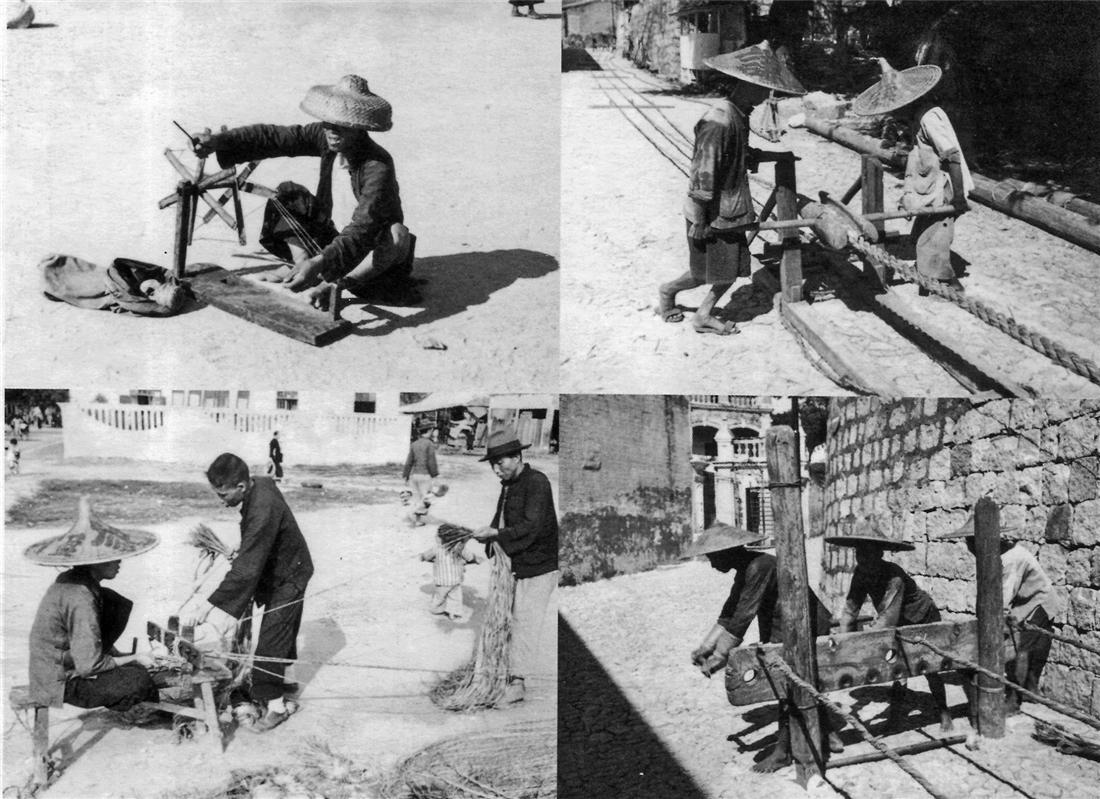Braiding of Rope and Cordage
During early 20th century, fishermen and workers would be seen engaged in braiding rope and cordage at the open square in front of Lin Kai (Lotus Stream) Temple. The braided products were then taken to boat equipment shops and general merchandise stores at S. Lourenço district for sale. By then, the tools used in rope-braiding were kind of simple, just a wooden framework with several small moveable iron hooks affixed to it. The braider would fit a hemp twine into the different hooks to braid them into a thin twine. A thick rope is made from braiding a few thin twines together. Sometimes, a single person operated the wooden framework and another person handled the hemp twine. But occasionally, two frameworks were used, operated by four persons, to braid thin twine produced separately from the two frameworks into thick ropes.The rope-braiding business in front of Lin Kai Temple used to occupy a huge area, which was later downscaled due to the construction of Estrada do Repouso. The area was split into two parts, one of them named Largo da Cordoaria and the other Travessa da Corda, a layout that has remained until today.











